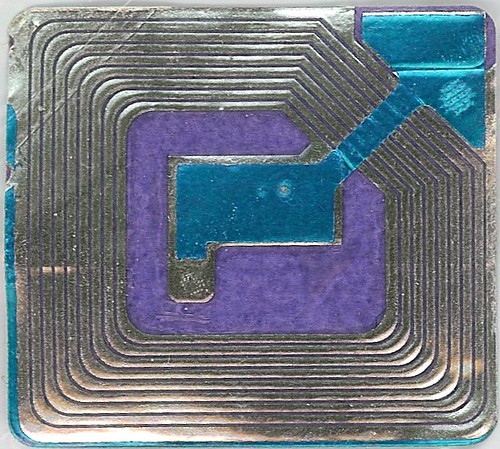 [PDF version]
[PDF version]Fifth International Summer School
organised jointly by the PrimeLife EU project
in cooperation with the IFIP WG 9.2, 9.6/11.7 11.4, 11.6.
Privacy and Identity Management for Life
(PrimeLife/IFIP Summer School 2009)
to be held in Nice, France, 7th – 11th September 2009
New Internet developments pose greater and greater privacy dilemmas. In the Information Society, the need for individuals to protect their autonomy and retain control over their personal information is becoming more and more important. Today, information and communication technologies – and the people responsible for making decisions about them, designing, and implementing them – scarcely consider those requirements, thereby potentially putting individuals’ privacy at risk. The increasingly collaborative character of the Internet enables anyone to compose services and contribute and distribute information. It may become hard for individuals to manage and control information that concerns them and particularly how to eliminate outdated or unwanted personal information, thus leaving personal histories exposed permanently. These activities raise substantial new challenges for personal privacy at the technical, social, ethical, regulatory, and legal levels:
· How can privacy in emerging Internet applications such as collaborative scenarios and virtual communities be protected?
· What frameworks and technical tools could be utilised to maintain life-long privacy?
The theme of this Summer School to be held in September 2009 and co-organised by the PrimeLife EU project and the International Federation for Information Processing (IFIP) will be on privacy and identity management for emerging Internet applications throughout a person’s life.
Both IFIP and PrimeLife take a holistic approach to technology and support interdisciplinary exchange. Participants’ contributions that combine technical, legal, regulatory, socio-economic, ethical, philosophical, or psychological perspectives are especially welcome.
Contributions from students who are at the stages of preparing either masters’ or doctoral theses qualifications will be especially welcomed. The school is interactive in character, and is composed of both keynote lectures and seminars, tutorials and workshops with PhD student presentations. The principle is to encourage young academic and industry entrants to the privacy and identity management world to share their own ideas and to build up a collegial relationship with others. Students that actively participate, in particular those who present a paper, can receive a course certificate which awards 3 ECTS at the PhD level. The certificate can certify the topic of the contributed paper to demonstrate its relation or non-relation to the student’s PhD thesis.
Topics of interest include but are not limited to:
- privacy and Identity management (application scenarios/use cases, technologies, infrastructures, usability aspects)
- privacy-enhancing technologies
- anonymity and pseudonymity
- transparency-enhancing tools
- privacy and trust policies
- privacy-aware web service composition
- privacy metrics
- trust management and reputation systems
- assurance evaluation and control
- privacy in complex emerging real-life scenarios
- the use of privacy-enhancing mechanisms in various application areas that are often life-long in character such as eLearning, eHealth, or LBS
- life-long privacy challenges and sustainable privacy and identity management
- privacy issues relating to social networks, social network analysis, profiling
- privacy aspects of RFID and tracking technologies, biometrics
- surveillance, data retention, availability and other legal-regulatory aspects,
- socio-economic aspects of privacy and identity management, and
- impact on social exclusion/digital divide/cultural aspects.
Contributions will be selected based on an extended abstract review by the Summer School Programme Committee. Accepted short versions of papers will be made available to all participants in the Summer School Pre-Proceedings. After the Summer School, authors will have the opportunity to submit their final full papers (which will address questions and aspects raised during the Summer School) for publication in the Summer School Proceedings published by the official IFIP publisher. The papers to be included in the Final Proceedings published by Springer (or the official IFIP publisher) will again be reviewed and selected by the Summer School Programme Committee.
Summer School Website: http://www.it.kau.se/IFIP-summerschool/
The submission address for extended abstracts (2-4 pages in length) will be accessible via the Summer School Website.
Submission deadline: May 14, 2009
Notification of acceptance: June 18, 2009
Short paper (up to 6 pages) for the Pre-Proceedings: August 11, 2009
General Chair:
Michele Bezzi (SAP Research/ France)
Programme Committee Co-Chairs:
Penny Duquenoy (Middlesex University/ UK, IFIP WG 9.2 chair)
Simone Fischer-Hübner (Karlstad University/ Sweden, IFIP WG11.6 vice chair)
Marit Hansen (Independent Centre for Privacy Protection Schleswig-Holstein, Kiel/ Germany)
Programme Committee:
Jan Camenisch (IBM Research/ Switzerland, IFIP WP 11.4 chair)
Mark Gasson (University of Reading/ UK)
Hans Hedbom (Karlstad University/ Sweden)
Tom Keenan (University of Calgary/ Canada)
Dogan Kesdogan (Siegen University/ Germany)
Kai Kimppa (University of Turku/ Finland)
Eleni Kosta (KU Leuven/ Belgium)
Elisabeth de Leeuw (Ordina/ Netherlands, IFIP WG 11.6 chair)
Marc van Lieshout (Joint Research Centre/ Spain)
Javier Lopez (University of Malaga/ Spain)
Vaclav Matyas (Masaryk University, Brno/ Czech Republic)
Martin Meints (Independent Centre for Privacy Protection Schleswig-Holstein, Kiel/ Germany)
Jean-Christophe Pazzaglia (SAP Research/France)
Uli Pinsdorf (Europäisches Microsoft Innovations Center GmbH (EMIC)/ Germany)
Andreas Pfitzmann (TU Dresden/ Germany)
Charles Raab (University of Edinburgh/ UK)
Kai Rannenberg (Goethe University Frankfurt/ Germany, IFIP TC11 chair)
Dieter Sommer (IBM Research/ Switzerland)
Sandra Steinbrecher (TU Dresden/ Germany)
Morton Swimmer (John Jay College of Criminal Justice, CUNY/ USA)
Jozef Vyskoc (VaF/ Slovakia)
Rigo Wenning (W3C/ France)
Diane Whitehouse (The Castlegate Consultancy/ UK)
Organising Committee Chair:
Jean-Christophe Pazzaglia (SAP Research/ France)




















